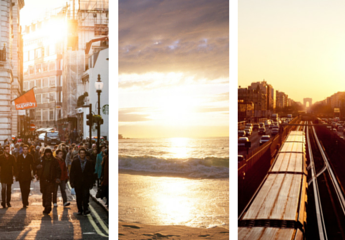It’s official – consumers love their convenience (with a caveat).
On Thursday Macy’s announced that it will close down another 68 stores and cut an additional 6,200 jobs, Kohl’s announced holiday sales were down 2.1% while holiday sales overall were up 3.6%, and Sears sold its iconic Craftsman brand to Stanley and announced it would close 109 Kmart and 41 Sears stores. This is a continuation of a trend a long time coming. Macy’s, Nordstrom, JCPenney, Sears and other department stores have seen in-store sales per square foot decline 24 percent since 2006.
This news came on the same day Amazon announced its Fulfillment by Amazon service delivered more than 2 billion items around the globe in 2016, grew more than 50 percent during the holiday season, and is in talks to purchase American Apparel.
Why are physical stores struggling to draw in shoppers and earn sales? Clearly the popularity of digital commerce is rising. But it’s not just the convenience of shopping at home, it’s about giving shoppers options – allowing consumers to buy products however, whenever and wherever they want. It’s also about personalization and creating a seamless, engaging and memorable shopping experience regardless of what channel customers are using.
Another factor is the high cost of maintaining a retail space in a shopping mall, particularly for anchor department stores. Department stores need to close hundreds of locations if they want to regain the productivity they had a decade ago. Research from Green Street Advisors estimates that the closures could include roughly 800 department stores, or about a fifth of all anchor space in U.S. malls.
Mall owners are also proactively seeking retailers that do a better job of driving shoppers to the centers and lifting overall mall sales. Landlords are nudging out big box chains in favor of sporting-goods retailers, fast-fashion chains, supermarkets, gyms, restaurants, movies theaters and other types of entertainment as they seek to keep their properties relevant in an age increasingly dominated by online shopping.
Finally, the type of retailers occupying malls today is vastly different than just 10 years ago. Exclusive specialty retailers that offer luxury items find malls very attractive because shoppers still want to try on the ring, sit on the loveseat, or feel the heft of the copper pot before buying it and bringing it home. So while for most consumer goods such as clothing, if you know your size, shopping for the best price and free 2-day delivery is the way to go. When shopping for that expensive gift, we still want the service provided by specialty retailers.
Note that regardless of what they’re buying, consumers want service, it’s just that services means something different based on the good.
